- About us
- Support the Gallery
- Venue hire
- Publications
- Research library
- Organisation chart
- Employment
- Contact us
- Make a booking
- Onsite programs
- Online programs
- School visit information
- Learning resources
- Little Darlings
- Professional learning
Edward ‘Ned’ Kelly (1855–1880), bushranger, is Australia’s pre-eminent folk hero. Kelly and his siblings were raised by their mother, Ellen Kelly (née Quinn, 1832–1923) after the death of their father, an Irish ex-convict. The family was in constant conflict with the authorities and Ned Kelly, implicated in the criminal activities of the Quinn clan, was charged with several offences over the 1860s and 1870s, and spent some years in prison. In 1878, accused of shooting at a policeman, Ned and his younger brother Dan Kelly went into hiding near Mansfield, Victoria, and were joined by their friends Joe Byrne and Steve Hart. Ned killed three members of a police party sent to capture him in the famous shoot-out at Stringybark Creek in October of that year. Despite the huge prices on their heads, the exploits of the ‘Kelly gang’ multiplied. They avoided capture until June 1880 when they arrived in Glenrowan, intending to ambush a police train. Ned, wearing a homemade suit of armour, was wounded in the ensuing ‘siege’ in which Dan Kelly, Byrne and Hart all died. Kelly survived, only to be hanged in Melbourne Gaol on 11 November 1880.
Following the execution of a notorious prisoner, it was customary for a death mask to be made. Maximilian Kreitmayer, the proprietor of a Melbourne waxworks, took a cast of Ned’s clean-shaven head in the deadhouse of the Melbourne Gaol. One of the several masks that were made of Kelly was immediately put on display in Kreitmayer’s establishment.
Collection: National Portrait Gallery Study Collection, Canberra
Gift of John Molony 2018
Ned Kelly, infamous bushranger and Australia’s pre-eminent folk hero, his likeness captured in a three-dimensional cast plaster death mask made in 1880, attributed to Maximilian Kreitmayer, proprietor of the Melbourne wax works.
The death mask is life-size; it depicts Ned’s head, neck and a small portion of his right shoulder. The head tips to the right, eyes and lips closed; the expression calm. It is creamy white, chalky and unpretentious.
Ned’s head is small and round, the domed scalp without a skerrick of hair. The baldness highlights an uneven surface of bumps and depressions. His short forehead rests on a prominent brow, thick bushy eyebrows running straight and low along it, each hair presses on top of another, enmeshed. The eyebrows join above the bridge of the nose in a subtle monobrow.
His large almond shaped eyes, softly shut, bulge in their sockets. Thick eyelashes fan out along the edge of his eyelids, very short and blunt at the inner corners, lengthening as they extend outward. Fine wrinkles are lightly etched into the surface around his eyes.
Ned’s broad chiselled cheekbones frame a wide, delicately pointed nose. His thin, tender lips, gently closed. The flesh around his jowls and under his jaw swells, as if the face were slumping backward into the cranium. Slackened skin squeezing into folds creates a deep crease under the chin, it runs the entire width of his swollen throat. His head hinges abruptly, tilting down toward his right shoulder.
His large ears, details of which are crudely defined, have attached lobes. A raised line of chunky plaster makes its way up his shoulders and the sides of his neck, across his ears, and over his head, as if dividing the death mask in two halves. The creamy matt surface is unpolished and pitted, there are tiny blemishes, scuffs and scratches.
Audio description written by Marina Neilsen and voiced by Rory Walker
Professor John Molony (1 portrait)



On one level The Companion talks about the most famous and frontline Australians, but on another it tells us about ourselves.
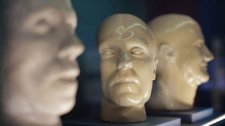
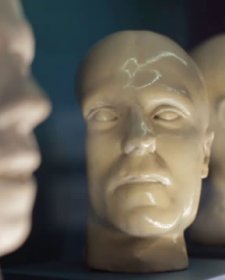
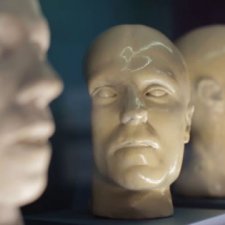
Alexandra Roginski explains the history behind the pseudo-science of phrenology.
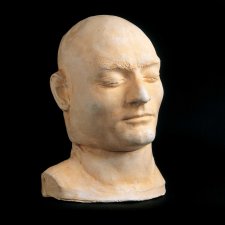
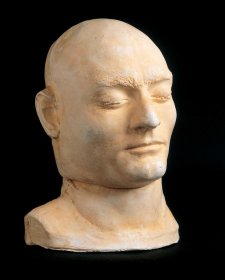
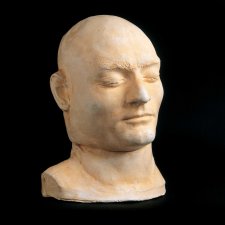
Alexandra Roginski gets a feel for phrenology’s fundamentals.